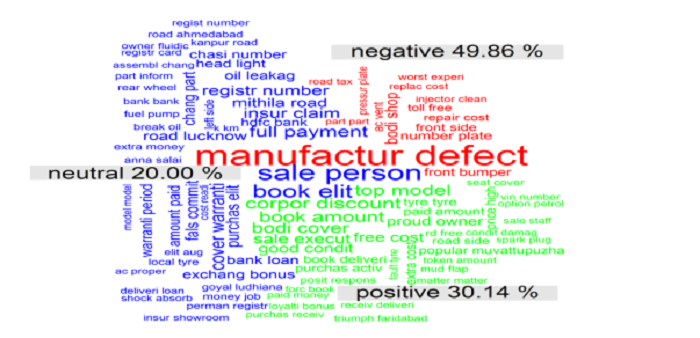Anatomy Of Fraud Investigation and Detection - Part 3
Continuing on how to determine financial fraud, here we will talk about mechanisms recommended to detect financial fraud through analysing financial statements.
Text Mining Techniques to detect corporate fraud
In addition to the above mentioned techniques to detect corporate frauds we can also use a what information gets distributed on social network and other informal channels regarding companies involving in fraud to cross reference them with their financials statements to determine legitimacy of their books

Topic Modelling
Topic modelling is a natural language based statistical model to discover abstract topics in a set of documents (or sentences). Latent Dirichlet Allocation (LDA) has been used quite successfully in topic modelling. LDA is highly modular and can be extended. Topic modelling has been used to infer what is the context of the written sentences. This can be used in case of fraud detection to mine social network data and email data to find out top keywords which are subject of discussion and then correlate them with other financial data using graph database or using other above mentioned techniques.

Contextual Variable Extraction through Text Mining
Using text mining we can look for contextual variables to be determined, such as if an internal/external financial audit found compliance issues and the issues were closed, who certified the closure etc. We can then create a list of multiple such variables over time and analyze them to see if the compliance is followed as a regular practice or not.
Here again inputs from senior financial auditors o what are the regular practice followed by manipulators and using text mining to extract these patterns to observe their adherence will be of great help.

Financial Statement Fraud detection using systemic functional linguistic theory
Systemic Functional Linguistics theory (SFL) is a useful analytic framework to develop feature set to detect financial fraud. SFL is extremely useful tool to detect any fraudulent statements in Management Discussion and Analysis section if financial statements.
SFL uses LDA (Latent Dirichlet Allocation), computational linguistics and term frequency inverse document frequency (TF-IDF) methods to extract word level and document level features, which form input to support vector machine (SVM) classifier.
SFL divides language into 3 metafunctions
- Ideational
- Interpersonal
- Textual
Ideational metafunction are: topics, opinions, emotions. It has been observed that where management engaged in fraud are more likely to use positive words than the non-fraudulent companies.
Interpersonal metafunction represents the way writer and reader interacts. Writers use language to express attitude towards the subject matters and to influence readers behaviour. Modality and personal pronouns are used in interpersonal metafunction. Modality shows writer’s judgement of a proposition. For example when we use “must” it represents a high degree of certainty about validity of a proposition. Similarly “could” represent a low value judgement. In addition if a management wants to disassociate with misstatement in financial statements then they decrease use of active voice. Management of fraudulent companies use more non-immediate reference, less self-reference and more passive voice.
Textual metafunction examines how language is organized to create a coherent flow of information. Writing style and genre are two mechanism to analyze this metafunction. Writing style is literary choices based on reflection of context. Genres represent how writers typically use language to respond to recurring situations. Change in writing style and genre can be observed when Management is engaged in fraud.
If you would want to know more about Fraud detection techniques or want to see some of the above in action in the form of a demo, please connect using the Contact page and we will get back soon.


